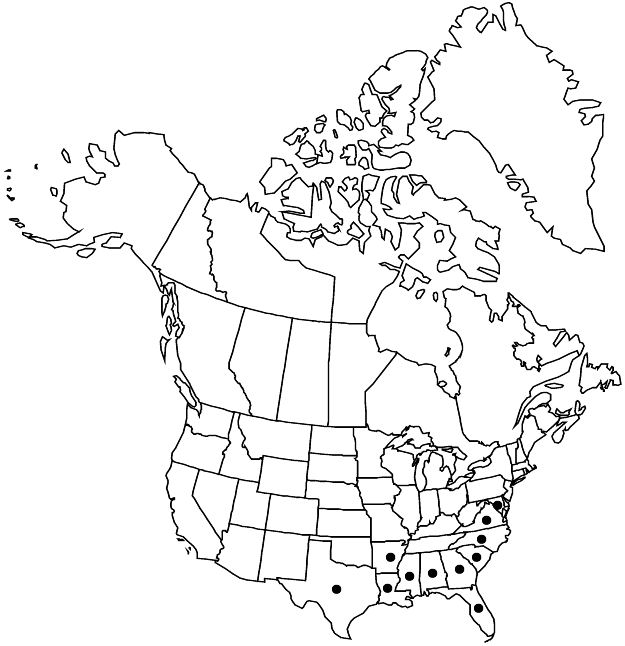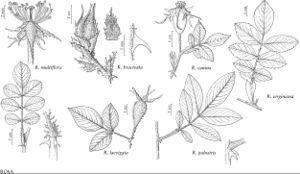Rosa bracteata
Bot. Beob., 50. 1798.
Stems climbing or vinelike, sometimes decumbent, 30–50 dm; branches flexuous, brown; infrastipular prickles usually paired, broad-based, internodal prickles paired or single, reddish brown, 4.5–9 × 6–9 mm. Leaves: stipules 3–4 × 2.5–3.5 mm, auricles 3–6 × 1.5–2 mm, surfaces tomentose; petiole and rachis with pricklets, glabrous or pubescent, usually stipitate-glandular; leaflets: base cuneate, margins 1-serrulate-crenulate, teeth 12–16 per side, broad-based, apex obtuse to acute, often apiculate, gland-tipped, abaxial surfaces green with scattered pricklets and stipitate glands along prominent midveins, sometimes with hairs along midveins, eglandular, sometimes glabrous, adaxial glabrous, eglandular. Panicles lateral and terminal. Pedicels: bracts ovate-acuminate, (6–)8–10 × 5–7 mm, margins densely white sericeo-tomentose. Flowers 5–7(–10) cm diam.; hypanthium 5–7 × 8–9 mm; sepal margins sparsely glandular-ciliate, tip 2–5 × 1–2 mm; petals 20–35 × 20–30 mm; carpels apically pilose, exsert 2–2.5 mm beyond stylar orifice of hypanthial disc (1–2 mm diam.). Hips leathery. Achenes 30–40+, tan, 4–5 × 2–3 mm. 2n = 14.
Phenology: Flowering May–Oct.
Habitat: Disturbed areas, roadside hedges, open fields, pastures, bayou edges, ditches, along railways, woods, swampy thickets, pinelands
Elevation: 0–500 m
Distribution

Ala., Ark., Fla., Ga., La., Md., Miss., N.C., S.C., Tex., Va., Asia (China, s Japan, Taiwan), introduced also in West Indies, Europe, Australia.
Discussion
Rosa bracteata was introduced to Europe in 1795, and later to the United States, where it became widely naturalized and invasive in parts of the southeast, and in the West Indies. The species forms dense thickets of puberulent to tomentose stems; bracts, pedicels, and hips are densely sericeo-tomentose. The six to eight bracts closely subtend the short pedicels and tightly cover about half or all of the hypanthia.
Selected References
None.
